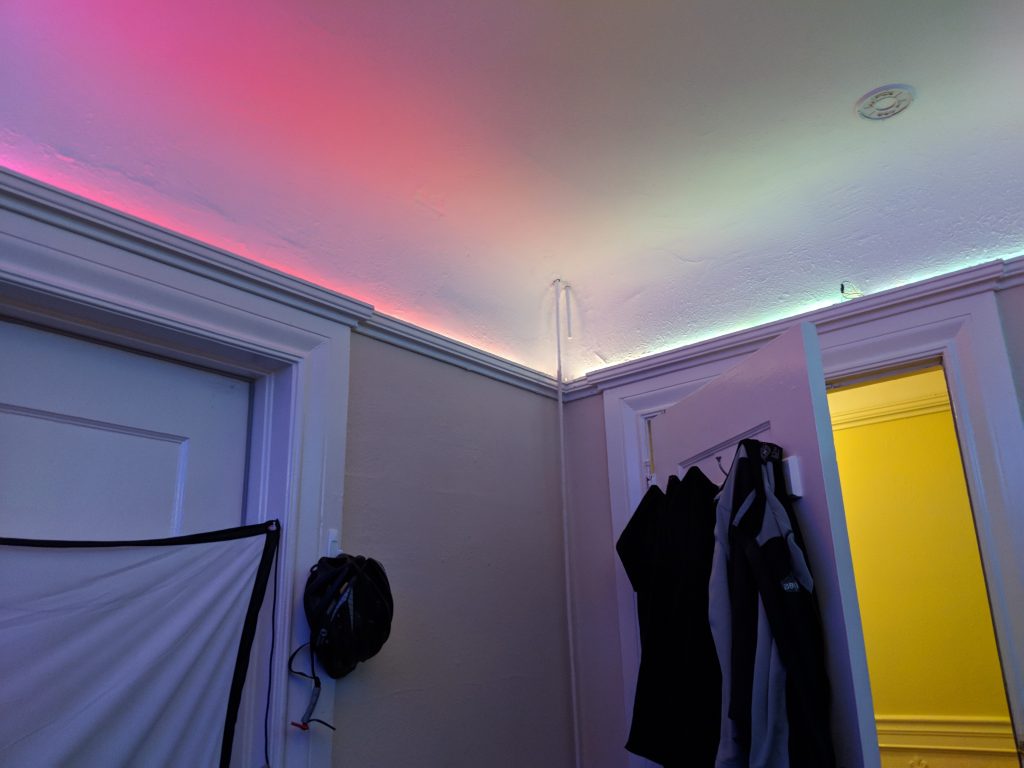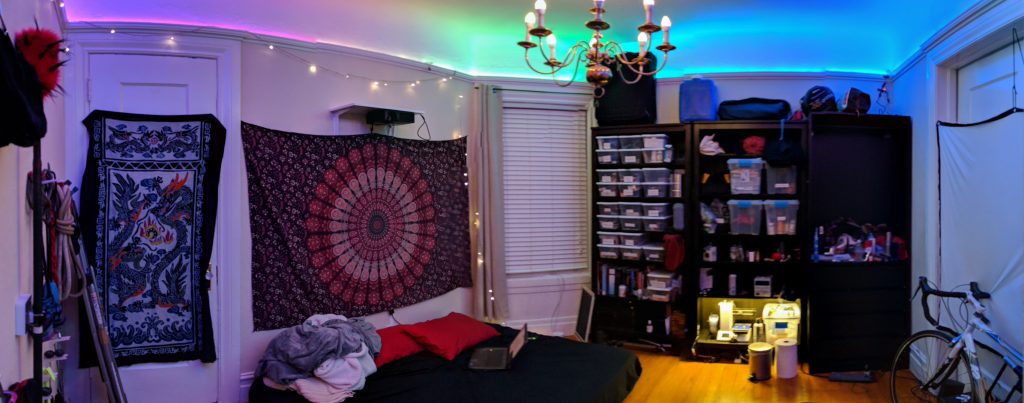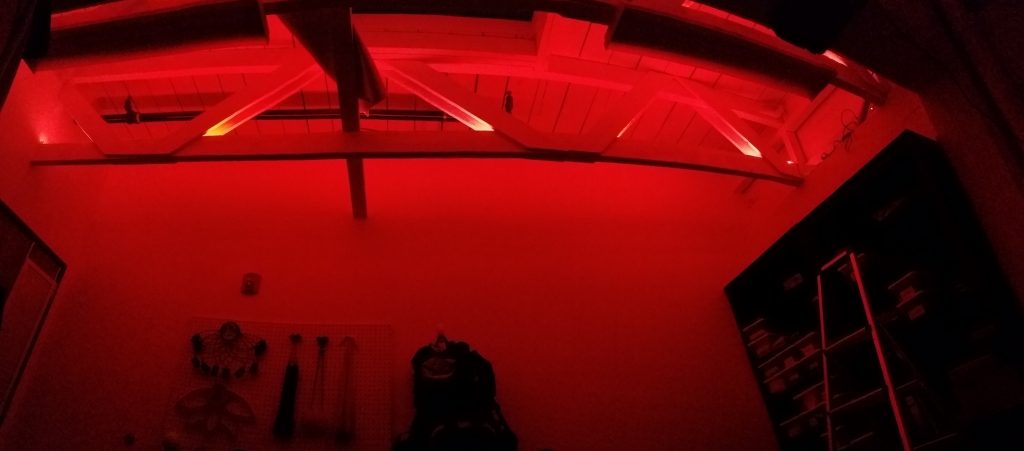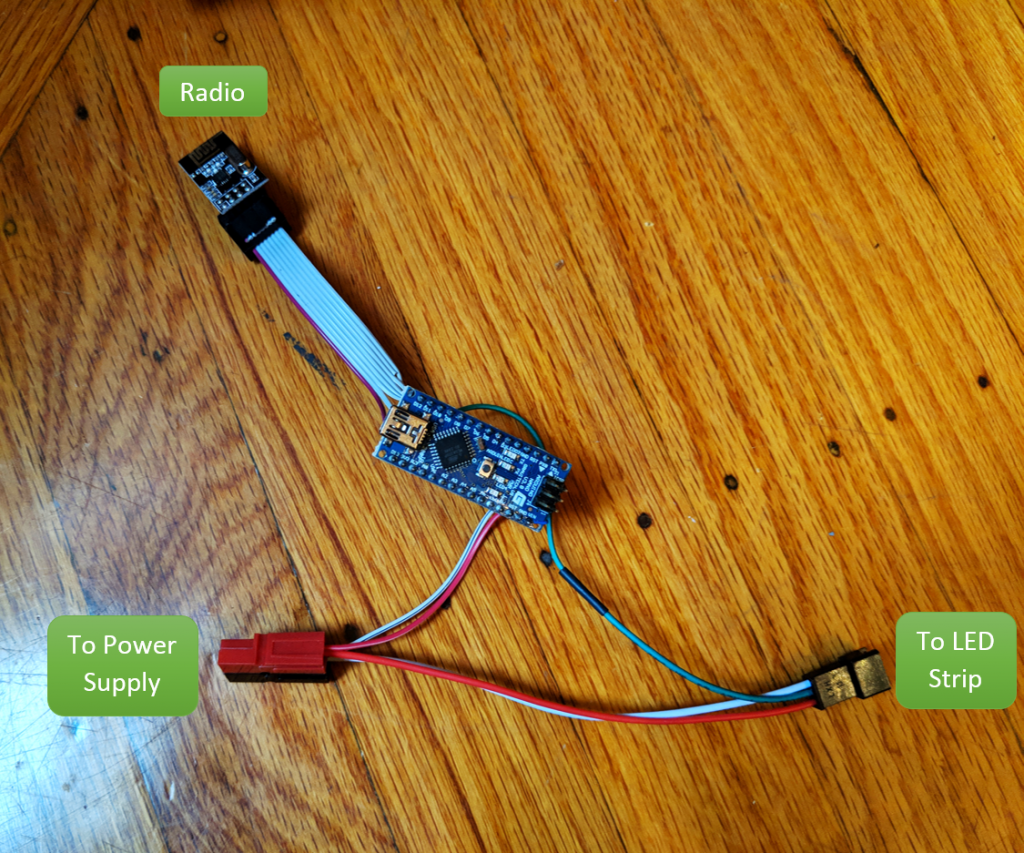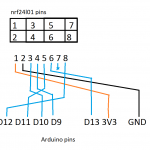In case you haven’t had enough of rooms lit up with LED strips, here’s another! This is an old project, but I thought it might be helpful to anyone who wanted to do something similar: LED lights controlled wirelessly via nrf24l01 radio modules.
The effect is similar to the room lights I put up in my apartment in Boston (link to post). However, the first place I lived when I moved to San Francisco a couple years ago had some cool rafters in the ceiling, and I wanted to illuminate each of them in sync but without hanging too many wires. So, instead of using a Raspberry Pi to control the strips, I made several strips, each controlled by an Arduino with a radio module. I sent commands to all strips at once using a separate module acting as a remote control.
As I mentioned, I used nrf24l01 radio modules, which I find to be really convenient for adding wireless capabilities to a project. The controller for each strip ended up looking like this:
As before, I used 12V, triplet-addressable, WS2811-based LED strips since they’re really cheap yet still allow you to make patterns with spatial motion. A 12V supply powers both the strip and the Arduino (which regulates it down to power the radio). For anyone who would like to replicate this, here’s the wiring that I used between the Arduino and the nrf24l01 module.
As for the software, the source code is on Github here. I used the Adafruit Neopixel library and a nRF24L01 library that can be found here.
In the source code, two Arduino sketches are provided. One sketch is for the light strip controller, and one is for the remote control. The light strip controller advances through a cycle of a few simple patterns whenever it receives a message over radio. The remote control sends a single message when it starts up, so pressing the reset button is sufficient to change the pattern. I powered the remote control Arduino with a USB battery bank so it was portable. I didn’t take a lot of time to make sure the setup works just right, so I’m providing this code more as a reference than as something that will work off-the-shelf.
With that, I’ll leave you with some media for how it turned out.
